Forget 4K Blu-rays: Forza Horizon 5 is the ultimate test for your TV and AV system
The latest racer for Xbox Series X will push your setup like never before

We’re pretty used now to the fact that the latest Xbox Series X and PS5 consoles are capable of giving your home cinema system a serious work out. Just how spectacular a work out, though, is of course down to how hard a particular game pushes the hardware. And few if any games to date have pushed the hardware as hard as Forza Horizon 5.
Anyone who’s played any of the previous Forza Horizon games will know the basic drill of this latest instalment: you get to tool about a large chunk of exotic, impressively varied landscape (in this case, Mexico) at mind-bending speeds in an endless procession of stunning cars, either just taking in the gorgeously rendered scenery or taking part in a huge series of events that range from straight races to speed camera challenges, ramp jumps and even multi-player ‘combat’ matches such as capture the flag and ‘infected’.
With the recently released fifth instalment, though, Playground Games has leveraged the potent graphical features of the Xbox Series X to take both the car and scenery parts of the Forza Horizon experience to a whole new level. A level that not only substantially ups the fun, but also rewards you handsomely for investing in a serious TV and sound system.
On the graphics front, Forza Horizon 5 on the Xbox Series X offers two core graphics modes: Quality and Performance. Both do remarkable but quite different things.
Quality mode
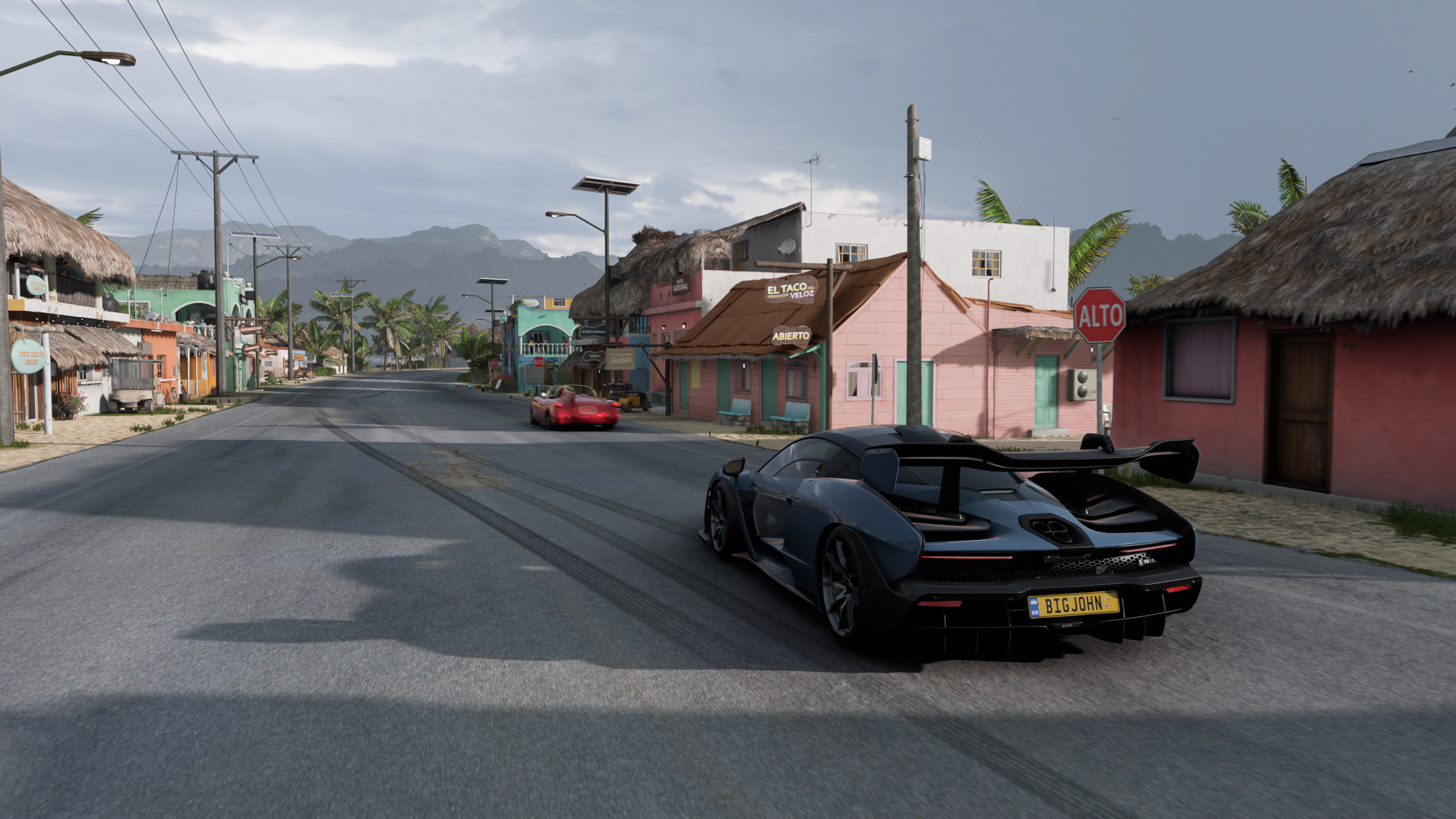
The AV fan in us invariably turns with FH5 to the Quality mode. This renders the game at a full native 4K resolution in high dynamic range (you can even go for Dolby Vision HDR output if your TV supports that), at 30 frames a second. What’s more, features such as 4X Multi-Sampling Anti Aliasing and a new world-building system that can create landscapes from as many as five different layers of detail and texture ensure that there’s quality as well as quantity to the 4K pixel count.
This stunningly consistent native resolution in Quality Mode contributes to a greater sense of depth to the beautiful Mexican scenery, as the horizon that gives the game its name can be rendered further before ‘fogging out’. But it also makes near objects – including the all-important cars – look much more detailed, three-dimensional, realistic and beautiful than they’ve looked before.
Near environments look even more lifelike in Quality mode than they did on Forza Horizon 4, too, getting the game even closer to the photorealism that’s such a massive part of the franchise’s appeal. It’s startling, too, how much of a difference this makes to the sense of speed you feel as you’re pushing a Koenigsegg Agera RS to 270mph and more. Really high speeds felt a little cartoony on previous iterations, but not any more.
The latest hi-fi, home cinema and tech news, reviews, buying advice and deals, direct to your inbox.
Just as importantly for a car game based as much on exploration as racing, though, FH5’s remarkable detailing also delivers the goods if you happen to be cruising around soaking up the environment at pretty much walking speed.
More happens in FH5 when you ‘interact’ with (that is, crash into) the immediate environment, too. So now, for instance, branches of trees drop with startlingly realistic ‘physics’ around you when a tree or bush decides to position itself in front of your hurtling car. Or if you run into a pile of barrels or even the occasional clothes rack outside someone’s house, these things will either disintegrate or get pushed around much more extensively and realistically.
Unfortunately the improved physics have also extended to bits that actually fall off your car. Losing the wing mirrors of your prized Aston Martin is an experience that never fails to make you wince.
Performance graphics
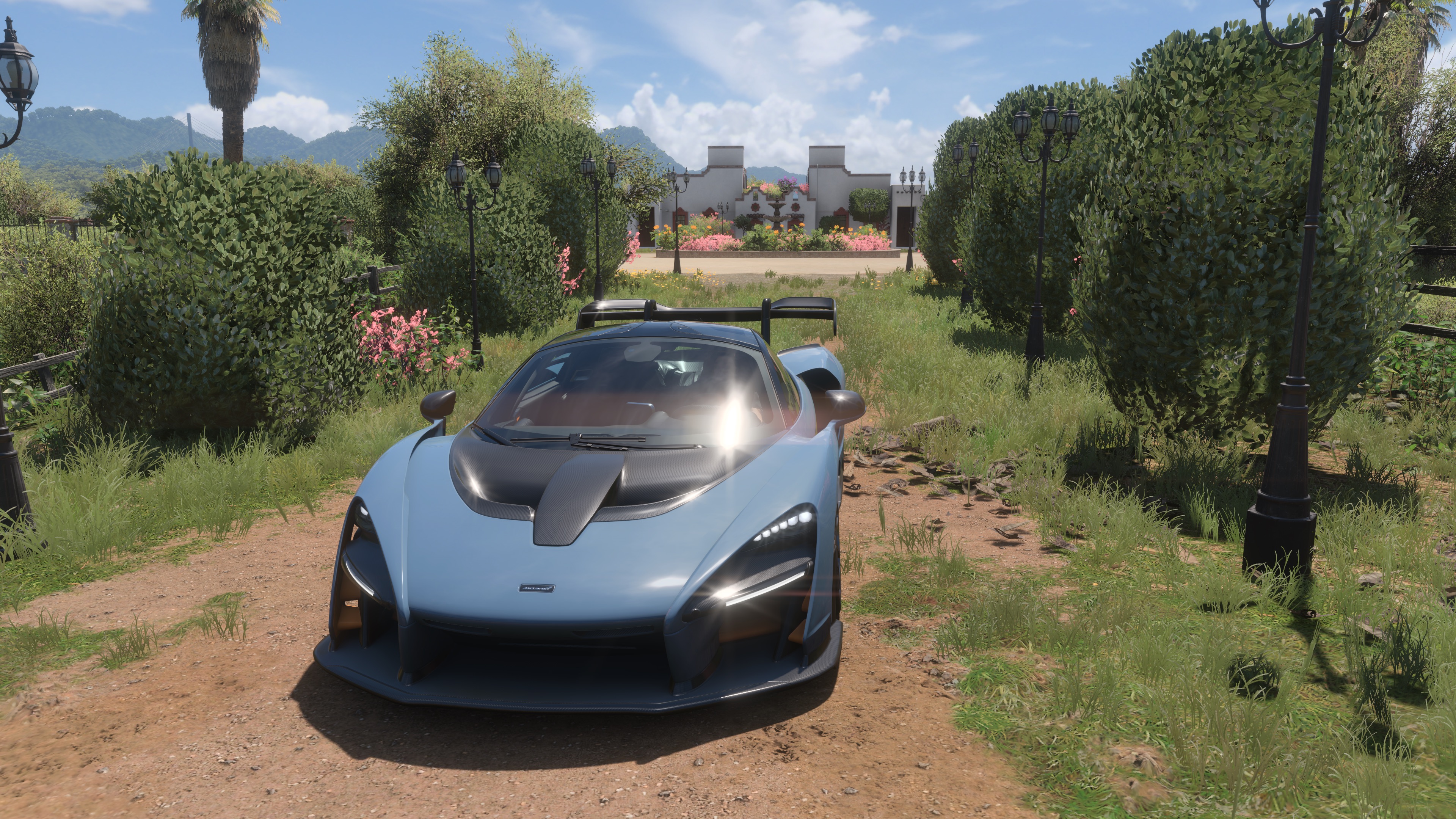
The outstanding new detail and sharpness of Quality Mode plays into a substantial improvement in the fidelity and subtlety of the image’s colours, too. This is most noticeable in the bodywork of the cars – especially models with lots of paint detail or ‘sculpting’, making them feel more three-dimensional and tangible.
While you can appreciate all these Quality Mode improvements to some extent on any 4K TV worthy of the name, there’s no doubt that they have the most impact on both bigger screens, where good quality 4K has always had the most impact, and on relatively premium screens that have the sort of colour range/finesse, light controls and picture management capabilities (even in their Game modes) needed to do such a fantastic graphics engine full justice.
TVs that still handle motion well when set to their Game presets, too, without substantial resolution loss or smearing, will also come into their own with the sort of near-constant barrage of fast-changing native 4K pixels that Forza Horizon 5’s Quality mode delivers.
It’s a pity, we guess, that the Quality mode doesn’t run higher than 30 frames a second. While this means it doesn’t give your TV a frame-rate workout in the same way that 120Hz titles such as Call Of Duty: Cold War do, though, the 30fps rate has seldom felt problematic during our already extensive play time. It’s only during particularly tight street or jungle races where we’ve felt the extra fluidity of 120Hz might have been a real joy to behold.
This, though, is where the Performance graphics setting comes in. It might not hit 120Hz, but it does sacrifice resolution and one or two subtle interactive environmental effects to deliver a very solid 60Hz frame rate. So while the stunning realism and detail of the Quality mode is hard to resist for most of the time, we’ve found we tend to switch temporarily to Performance mode to get the best, most responsive results when taking part in a particularly tight or crowded race.

It’s worth adding that the 120Hz performance mode of Dirt 5 reminds us pretty starkly of just how much detail, texture and even depth a racing game may have to sacrifice to deliver so many frames. Applying the same level of fidelity and detail compromises to Forza Horizon 5 for the sake of a 120Hz mode would have basically ripped the heart out of its ‘sight-seeing at speed’ appeal.
Joining the stunning new fidelity of the latest Forza Horizon in bringing Mexico to life is some really aggressive use of HDR. For instance, a game such as this that goes for a near photo-realistic approach to exterior environments benefits even more than most titles from the sort of extra realism that HDR’s much-expanded light range can bring to both bright daylight settings and the sort of ultra-dynamic artificial lighting you get in lit windows and car headlights during FH5’s gorgeous nights.
Weather effects
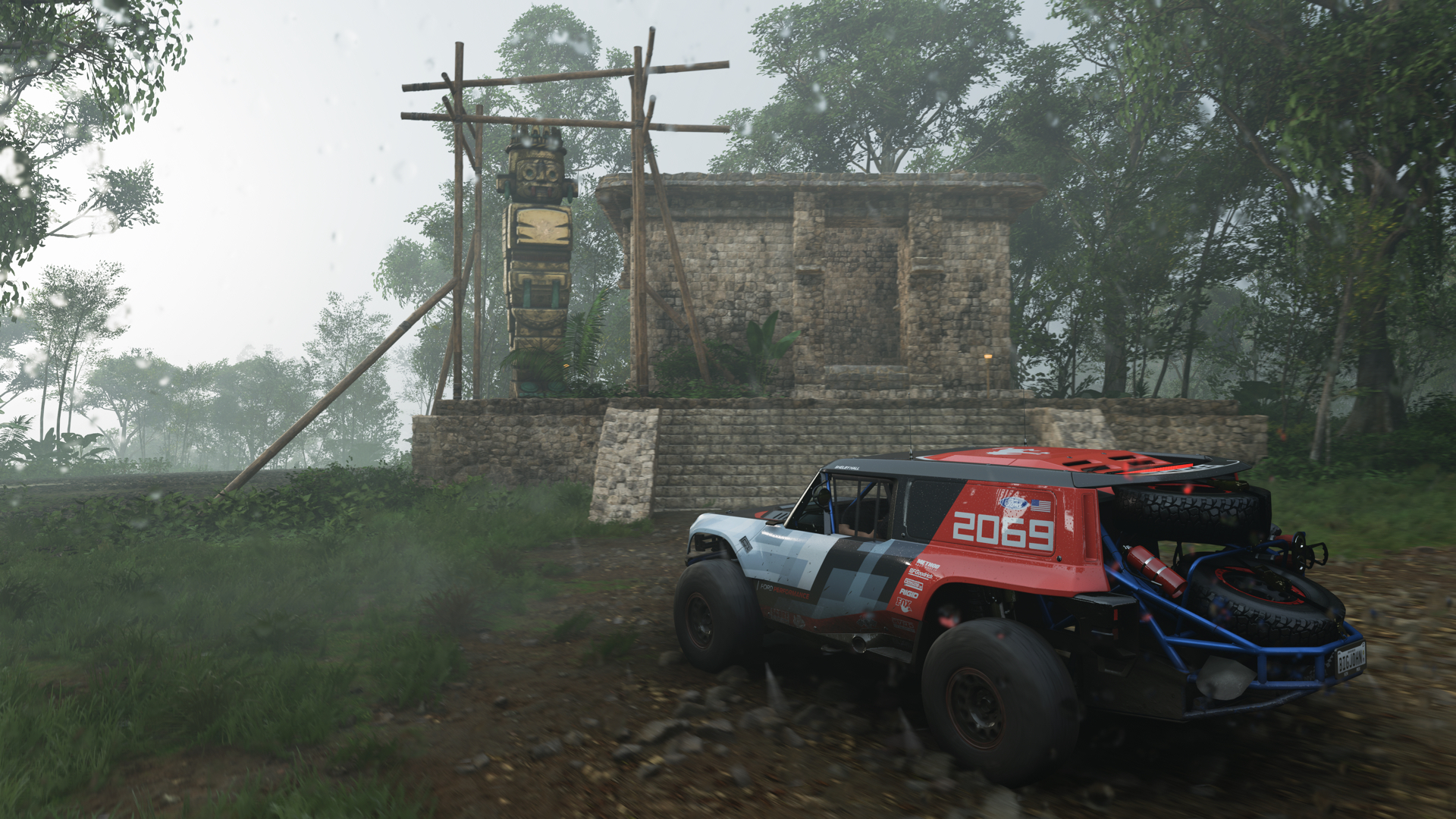
FH5 improves the way HDR can enhance the game’s different seasonal weather effects, too. In particular, a new system for interpreting how light passes through objects and foliage has a stunning effect on the authenticity of some settings – especially jungle areas, or moments where you find yourself looking directly into sunlight streaming through a copse of trees or a just-breaking rain cloud.
Pay attention to the reflections and light shifts playing across the body work of your car, meanwhile, and the HDR-bolstered accuracy with which they reflect – literally – the car’s surroundings really is uncanny. This makes the cars feel much more part of their environment, again giving the whole racing experience more immediacy and solidity. Vague, floaty racing in is no more.
How impactful FH5’s HDR delivery is, though, will depend pretty directly on the capabilities of your TV. So if you’ve invested in a high quality screen capable of a combination of high brightness and decent local light control, FH5’s daylight will feel more like daylight, while its headlights will feel more like real-world headlights. In fact, you’ll enjoy as good a demonstration of the joys of HDR as we’ve seen.
Do make sure, though, that you’ve got your TV and Xbox Series X working as closely together as possible where HDR is concerned. If your TV has an HGiG (HDR Gaming Interest Group) picture setting, select it. Also, be sure to run the Xbox Series X HDR set up system found in the console’s display menus. If you don’t, and you’ve never run the HDR set up routine before, you may well find that, even on very high-end TVs, the brightest parts of FH5’s aggressively HDR pictures look flared out and bleached of subtle detail and shading.
While we’re talking about picture settings, also make sure that you’re playing FH5 in your TV’s low-latency Game preset, (assuming it has one – most do). As well as giving you the fastest reaction times, Game modes typically turn off all noise reduction and most motion processing, ensuring you can lap up the game’s graphical thrills without having processing-related nasties such as motion smearing, softness, shimmering around moving objects and pixel lag spoiling the show.
Audio experience
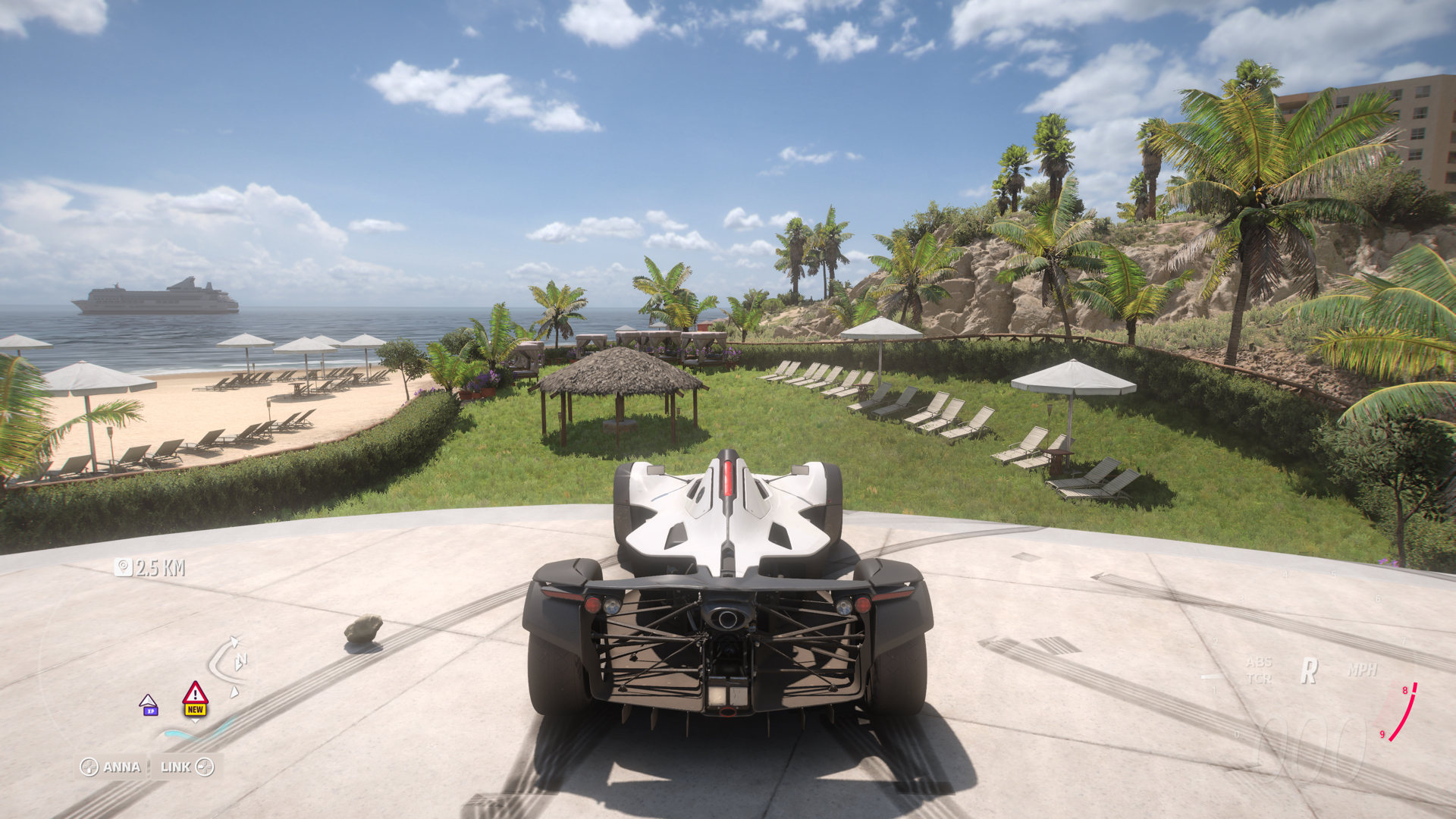
Joining the fantastically improved visuals in FH5’s new AV system-stretching engine is an impressively revamped Dolby Atmos sound engine. This features what the game designers call ‘ray tracing’ for audio. In other words, the Dolby Atmos sound system will use the same location principles of graphical ray tracing to detect environmental factors such as tunnel walls, close-by buildings, nearby cars, impact sounds and so on to place both reflected and direct sounds more accurately within a 360-degree soundfield built around your position in the game world. This includes overhead effects, where appropriate (and where you have a speaker system capable of delivering overhead effects convincingly).
This audio ray tracing approach transforms the Forza Horizon audio experience almost as much as FH5’s revamped visuals do, once again making the game world feel much more alive and ‘close’. Particularly during races, where the intensity and tension of the action is massively amplified by the way you can hear your rivals’ cars coming at you from all sides.
As promised, the ‘height’ Atmos channels really are aggressive to introduce an accurate sense of space to the game’s rare interior locations, as well as for accurately tracking objects (planes, the occasional bike, even the odd unfortunate car) that might be passing overhead.
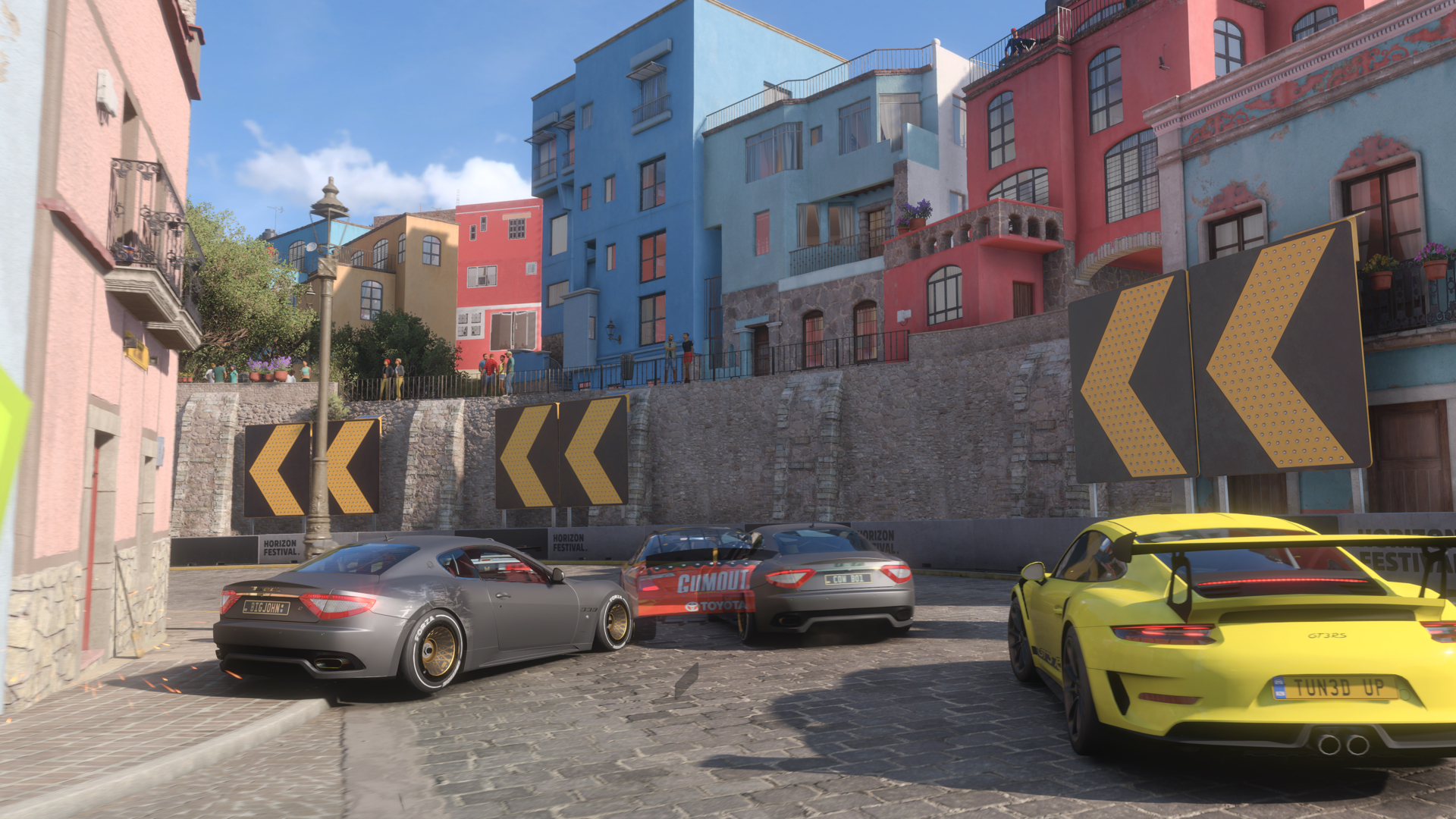
While the Atmos effect works well through a decent set of headphones if you’ve bought the Dolby Atmos headphones app, there’s no replacement for the power and precision of a full-on Atmos speaker system for really giving you the raw brutality and scale that the FH5 sound mix is capable of.
There’s still room for improvement with both Forza Horizon 5’s graphics and sound. There can be a noticeable shimmering effect over some near details that’s not caused by your TV, for instance. Car engines can sound a bit whiny, and a bit more action from your subwoofer wouldn’t have gone a miss. It’s also still relatively early days in the Xbox Series X’s life, meaning developers are still working with one eye on legacy machines and so perhaps not yet fully unleashing everything the latest console is capable of.
These are minor, maybe even churlish niggles, though. Overall Forza Horizon 5 delivers the most dazzling showcase yet for what both the Xbox Series X console and your home entertainment system can do. Or the best excuse yet for investing in taking your AV system to another level.
MORE:
Which next-gen console should you buy? It's PS5 vs Xbox Series X time!
If you want Forza Horizon 5 to look it's very best, you want on of the best gaming TVs
John Archer has written about TVs, projectors and other AV gear for, terrifyingly, nearly 30 years. Having started out with a brief but fun stint at Amiga Action magazine and then another brief, rather less fun stint working for Hansard in the Houses Of Parliament, he finally got into writing about AV kit properly at What Video and Home Cinema Choice magazines, eventually becoming Deputy Editor at the latter, before going freelance. As a freelancer John has covered AV technology for just about every tech magazine and website going, including Forbes, T3, TechRadar and Trusted Reviews. When not testing AV gear, John can usually be found gaming far more than is healthy for a middle-aged man, or at the gym trying and failing to make up for the amount of time he spends staring at screens.
